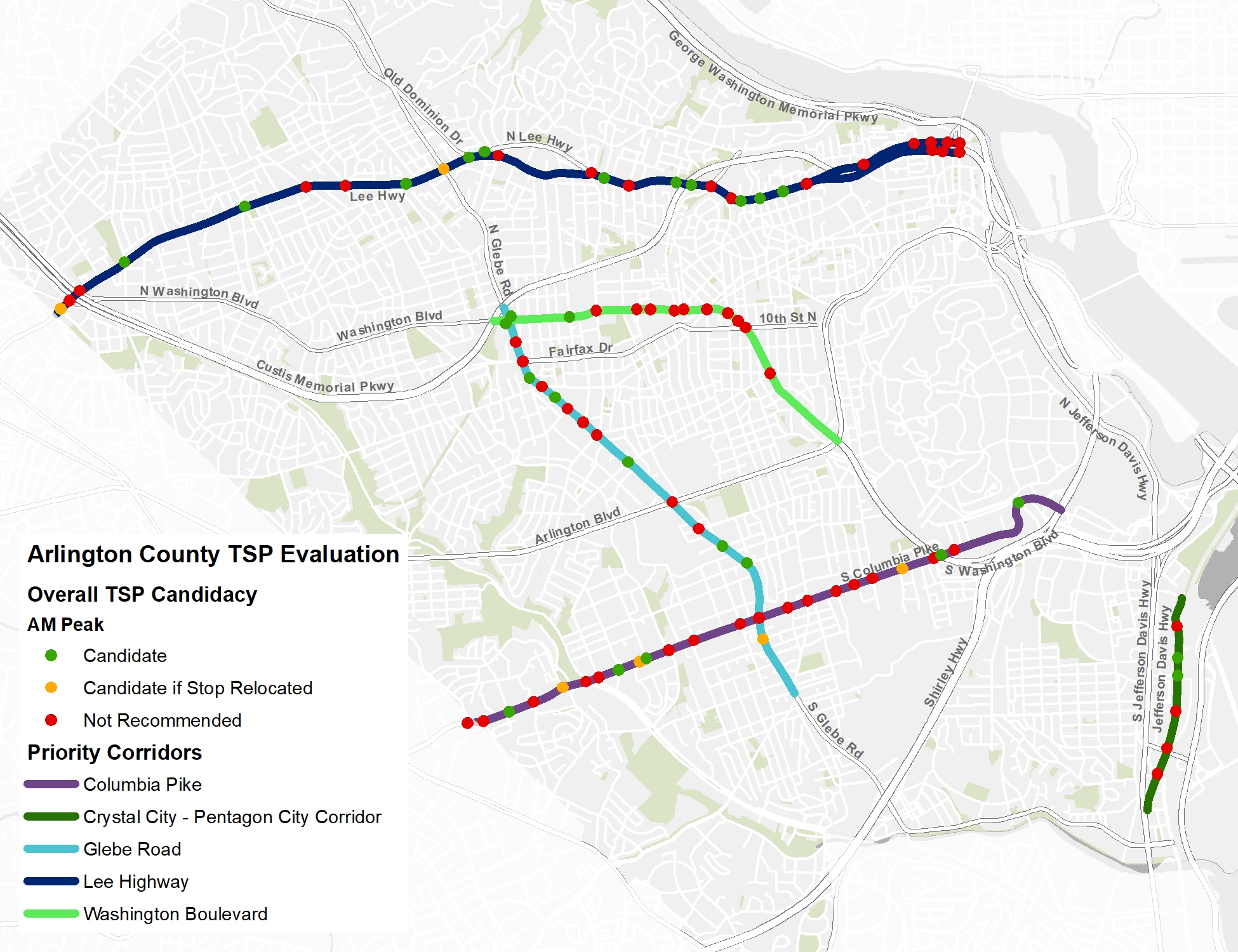Arlington County sought to improve bus speed and reliability. This project used a data-driven approach to select new locations for transit signal priority (TSP) on five priority corridors to help the County improve upon a robust transit system.
Foursquare ITP identified intersections along the priority corridors that would be best suited for TSP. This process required significant data cleaning and analysis capabilities. Our team led the efforts to calculate bus performance metrics at each intersection using separate Arlington Rapid Transit (ART) and Washington Metropolitan Area Transportation Authority (WMATA) datasets. Using very large datasets from both agencies’ APC/AVL systems, our data science team analyzed bus performance metrics at each stop, including schedule deviation, runtime variability, frequency, and passenger throughput. The resulting performance analysis, along with the location of bus stops with respect to the intersections, enabled us to provide the county with prioritized recommendations for where they would see the biggest impact from installing TSP.
Based on the bus metrics seen at each intersection, our team delivered a prioritized list of potential TSP locations to the county. Arlington County moved forward with implementing TSP on several corridors, knowing that the locations they chose will give them the biggest bang for their buck and result in better service for bus passengers in the county.

Solutions and Outcomes
- Prioritized list of potential TSP candidate intersections by direction and time period.
- Identified potential bus travel time savings by corridor.